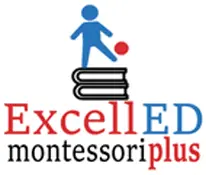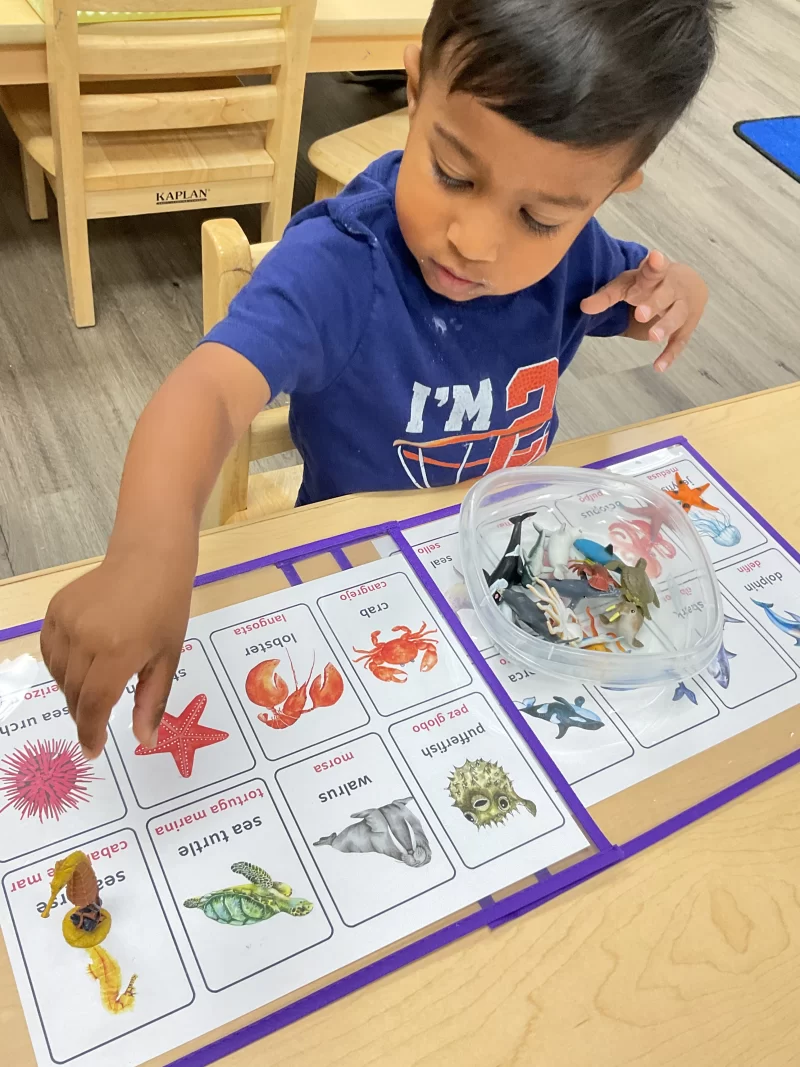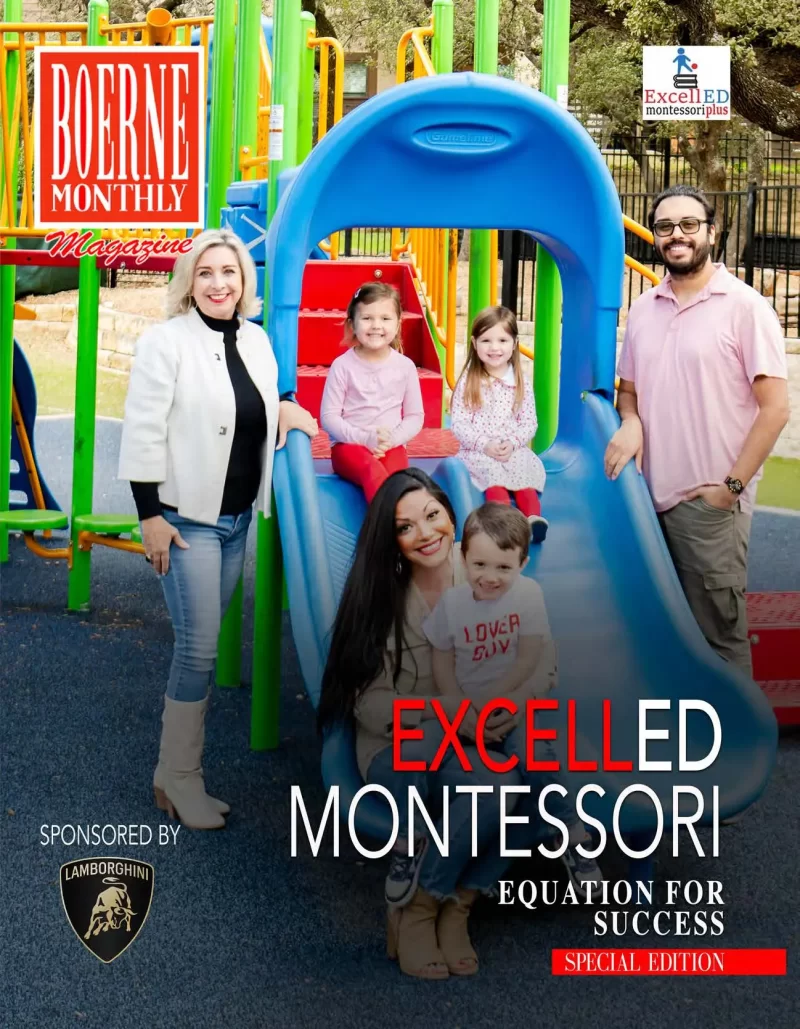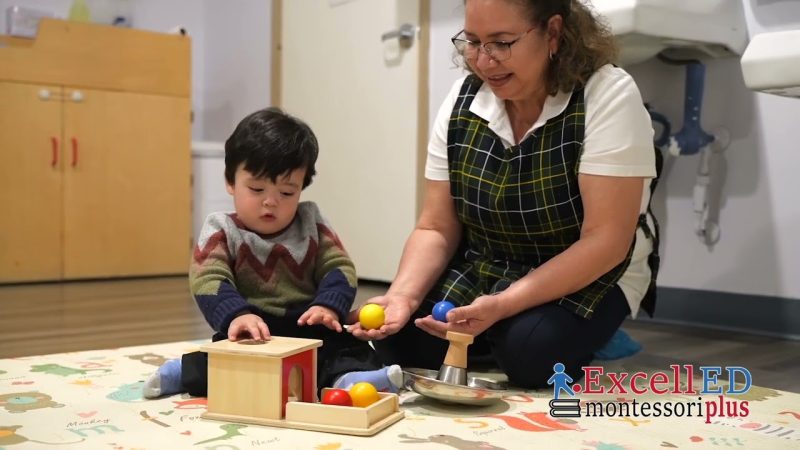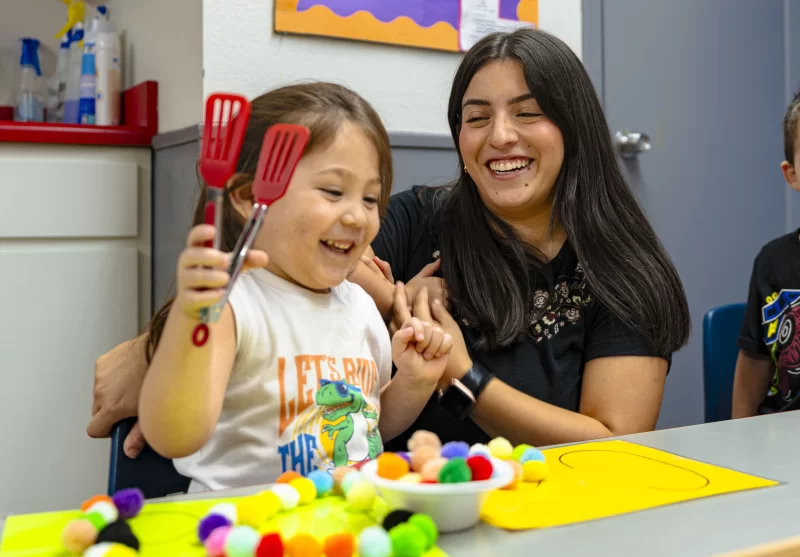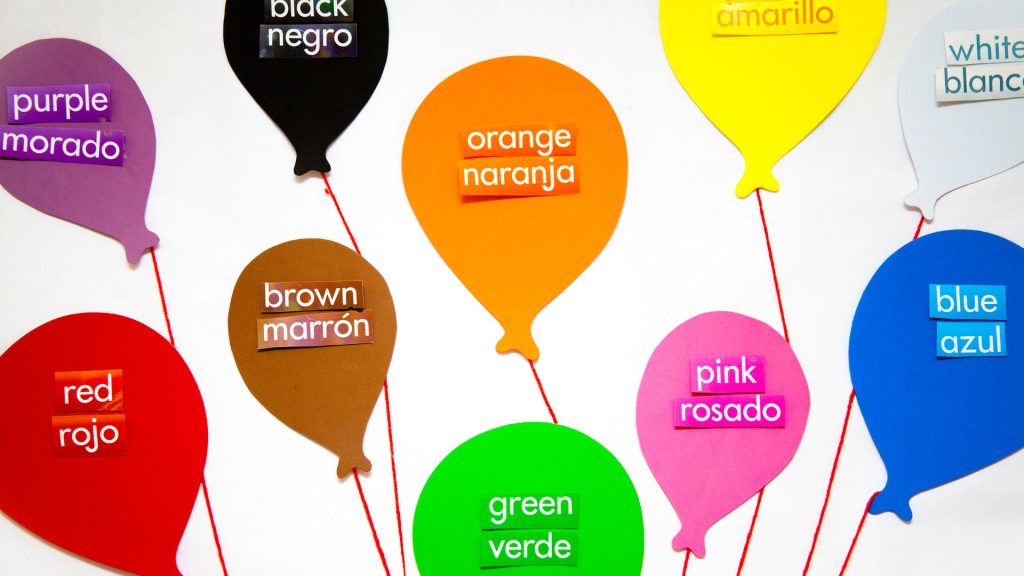
In today’s globalized world, being bilingual is more important than ever. For many parents and educators, the challenge is finding the best way to teach children two languages. Dual language learning models offer an effective approach to achieving bilingualism. These programs balance instruction in two languages, helping children develop fluency in both. Here’s an overview of dual language learning models, their benefits, and how they work.
Topic Outline:
- Are you ready to raise a bilingual child? Topic Outline:
- Bilingualism
- How can you prepare your child to be bilingual?
- Montessori & Bilingualism
What are Dual Language Learning Models?
Dual language learning models are educational programs designed to teach students two languages at the same time. In this model, children learn in both English and Spanish. There are several types of dual-language learning models, but they all share the goal of providing balanced instruction in both languages.
Types of Dual Language Learning Models
Dual-language models can vary in how they split language instruction. Here are some common approaches:
- 50-50 Model: Instruction time is evenly split between English and Spanish. This approach helps children become equally proficient in both languages. Studies show that the 50-50 model is effective for promoting bilingualism and biliteracy, as it provides balanced exposure to both languages.
- 90-10 Model: In this model, 90% of instruction is in Spanish and 10% in English at first. The balance gradually shifts to 50-50 over time. This model is effective in building a strong foundation in Spanish, especially when Spanish is less dominant in the community.
- 80-20 and 70-30 Models: These models also start with more Spanish instruction, gradually moving towards a balanced approach. These variations provide flexibility to meet the needs of the students and the goals of the program.
High-Quality Dual Language Programming: Key Components
According to the “Operationalizing High-Quality Dual Language Programming: From the Early Years to the Early Grades” framework, several key components are essential for successful dual-language programs:
- Programmatic Structures: Effective dual-language programs need strong leadership, clear policies, and supportive environments. Leaders should represent the community and be trained in the value of bilingualism.
- Language Allocation: High-quality dual-language programs should have a clear, planned language allocation model. This can vary, with common models including 50-50, 90-10, and 80-20 splits between English and Spanish. Research indicates that these models, especially the 50-50 and 90-10, effectively promote bilingualism and biliteracy.
- Curricula, Instruction, and Pedagogy: Programs should use research-supported curricula that address the whole child and include strategies for promoting bilingual learning. Translanguaging, which involves using both languages in instruction, is a promising approach.
- Assessment: Effective programs use assessments to guide instruction and ensure children’s bilingual development. These assessments should be linguistically and culturally appropriate.
- Workforce Education and Professional Development: Teachers should receive ongoing training in bilingual education strategies and be compensated fairly for their skills.
- Family Leadership and Engagement: Families should be actively involved in the program, with opportunities to lead and engage in their children’s education. Information should be accessible in their home languages.
- Services and Inclusion for Emergent Bilingual Children with Disabilities: Inclusive practices and coordinated support are essential for children with disabilities, ensuring they receive bilingual education tailored to their needs.
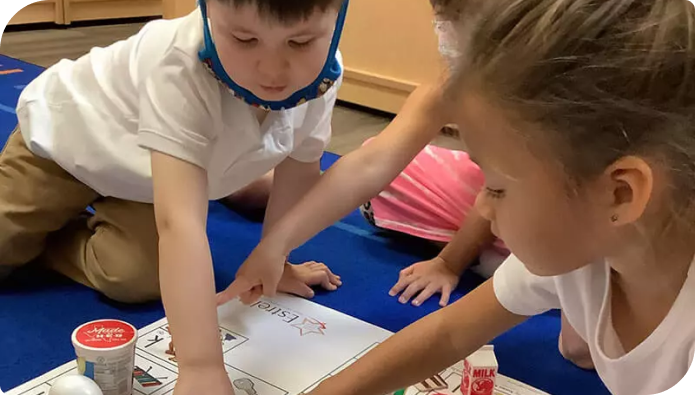
Benefits of Dual Language Learning Models
Enhanced Cognitive Skills: Learning two languages enhances cognitive abilities such as problem-solving, multitasking, and creativity. Bilingual children often outperform their monolingual peers in these areas due to the mental flexibility required to switch between languages.
Improved Academic Achievement: Research shows that dual language learners tend to perform better academically. The skills gained from learning two languages, such as better focus and memory, translate to higher achievement in subjects like math, science, and reading.
Cultural Awareness and Empathy: Dual language programs expose children to different cultures and perspectives, fostering empathy and a broader worldview. Understanding and respecting diverse cultures is a valuable skill in our multicultural society.
Better Communication Skills: Children in dual language programs develop strong communication skills in both languages. This proficiency can be beneficial in many social and professional contexts, opening up more opportunities for travel and global connections.
Long-Term Benefits: Bilingualism offers long-term advantages, including enhanced career prospects. In a globalized economy, employers highly value employees who can communicate in multiple languages and understand different cultural contexts.
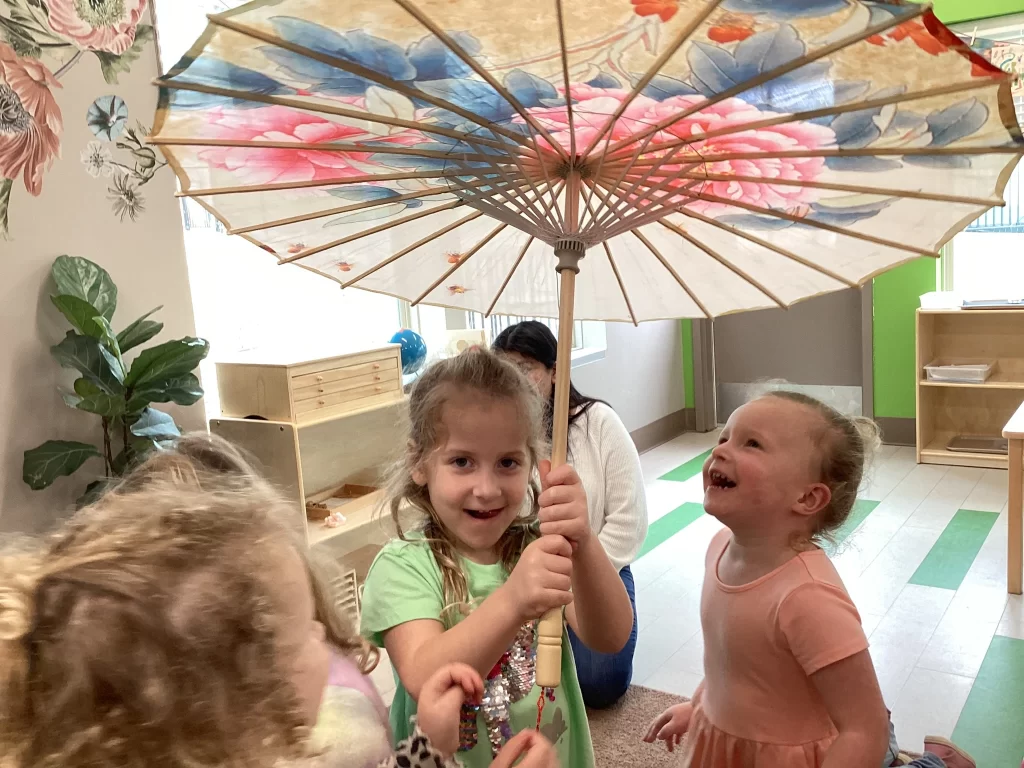
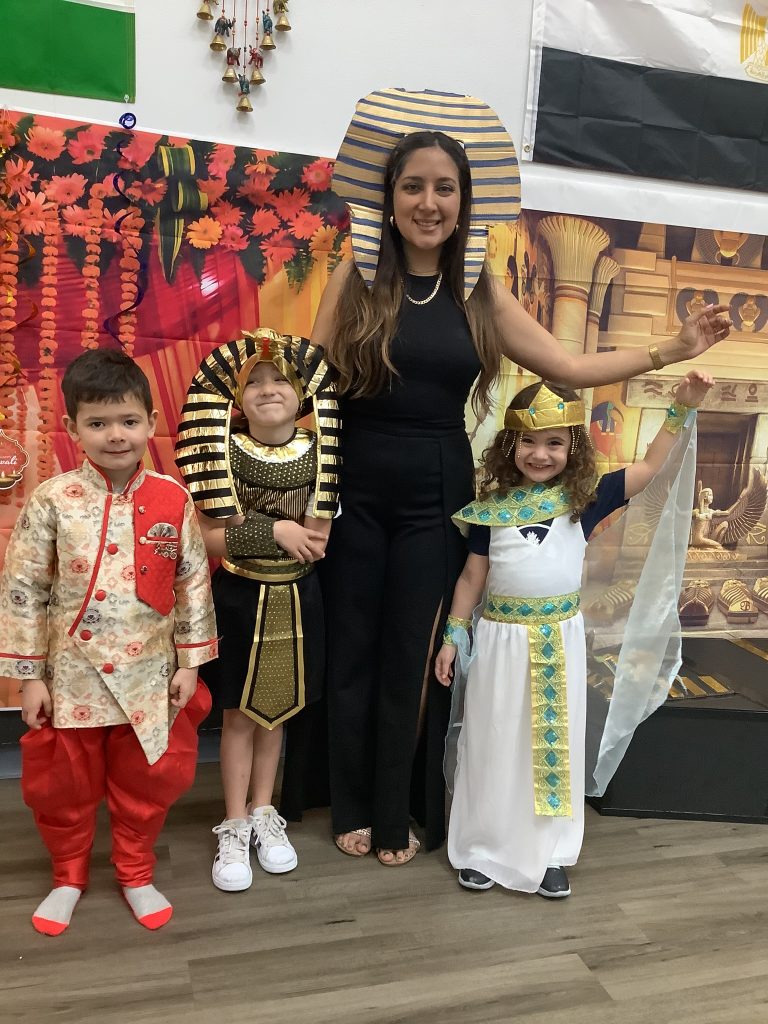
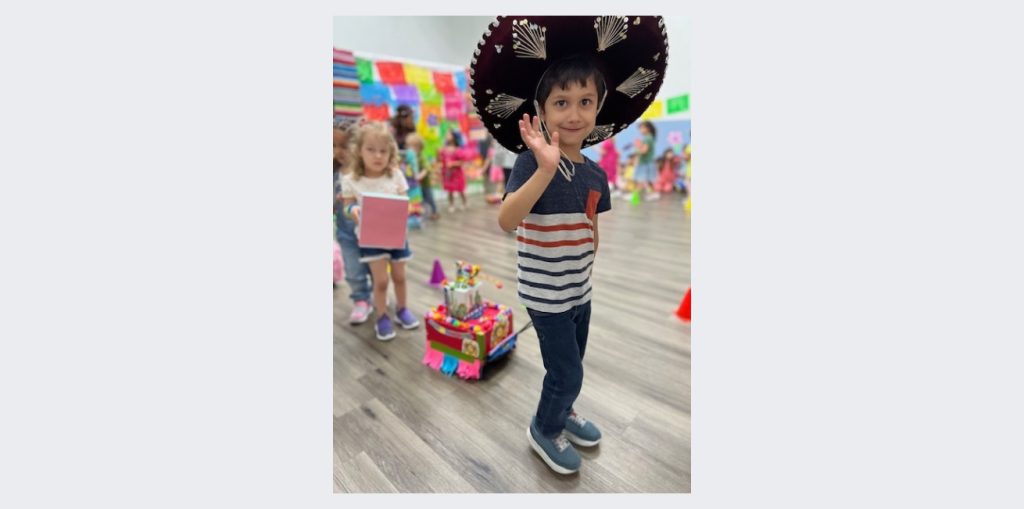
Tailoring Dual-Language Models to Family Language Backgrounds
Spanish as the Native Language at Home
For families where Spanish is the native language at home, a dual-language model can help reinforce the home language while building English skills. In a 90-10 model, young children initially receive 90% of their instruction in Spanish and 10% in English, gradually shifting to a more balanced 50-50 model as they progress. This helps children maintain their home language, connect with their cultural heritage, and build strong bilingual skills.
English as the Native Language at Home
In homes where English is the native language, dual-language programs can provide essential exposure to Spanish. A 50-50 model, where half of the instruction is in English and half in Spanish, ensures that children develop strong skills in both languages. This model is particularly effective for native English speakers as it immerses them in Spanish without compromising their English development.
One Parent Speaks English, One Speaks Spanish
For families with one English-speaking parent and one Spanish-speaking parent, dual-language programs offer a balanced approach. A 50-50 model works well, as it mirrors the bilingual environment at home. This model supports children in developing proficiency in both languages, facilitating communication with both parents and fostering a bilingual identity.
Challenges of Dual-Language Program
Setting up a dual-language program needs careful planning and skilled teachers who are fluent in both languages. Balancing the two languages can be tricky, especially in areas where one language is more commonly spoken.
- Teacher Recruitment and Retention: Finding and keeping well-trained, bilingual Montessori teachers who understand both languages and Montessori principles can be difficult due to high demand and specialized training requirements.
- Balanced Language Exposure: Maintaining consistent and equal exposure to both languages in the classroom can be challenging, especially in communities where one language is more dominant.
- High-Quality Bilingual Materials: Developing and sourcing Montessori materials that are available in both languages and are culturally relevant can be time-consuming and expensive.
- Standardized Testing and Assessment: Standardized tests are often conducted in English, which can disadvantage students who are fluent in both languages but may not perform as well in English-only assessments, leading to misconceptions about their academic abilities.
- Parental Involvement and Support: Engaging parents who are not fluent in one of the program’s languages can be challenging, making it difficult for them to support their child’s learning at home and leading to concerns about their child’s language development.
- Social and Emotional Integration: Ensuring that children in dual-language programs integrate well with their peers in English-only programs is important for their social development and can be achieved through mixed-language activities and school-wide events.
- Consistency Across Grades: Maintaining a consistent dual-language experience as children advance through different grades can be challenging, especially if they transition to schools with less robust dual-language programs.
- Cultural Understanding: Ensuring that cultural education is integrated alongside language instruction to prevent misunderstandings and foster appreciation for both cultures involved in the dual-language program.
Efficacy of Different Models
Research shows that dual-language models, regardless of the specific combination, generally lead to positive outcomes in language skills, academic performance, and thinking abilities. The choice of model can depend on several factors, including the community’s language context, the school’s resources, and the specific goals for language development.
- 50-50 Model: This model is effective for balanced bilingualism and works well in diverse language settings.
- 90-10 and 80-20 Models: These models are particularly beneficial in areas where one language (often English) is dominant, helping ensure strong skills in the minority language (Spanish) while still supporting English development.
Conclusion
Dual language learning models offer a powerful approach to achieving bilingualism and biliteracy. Balancing instruction in two languages, these programs help children develop strong language skills, enhance cognitive abilities, and gain a deeper appreciation for different cultures. While there are challenges to overcome, the long-term benefits for children’s academic, social, and professional futures make dual language programs a worthwhile investment.
For parents and educators looking to provide the best start for their children, dual language learning models present an enriching and effective approach to bilingual education. Embracing bilingualism not only enhances individual growth but also enriches our collective cultural tapestry, making our world a more connected and understanding place.
Abrazar el bilingüismo no solo fomenta el crecimiento individual, sino que también enriquece nuestro tejido cultural colectivo, haciendo de nuestro mundo un lugar más conectado y comprensivo.
- Are you ready to raise a bilingual child? Topic Outline:
- Bilingualism
- How can you prepare your child to be bilingual?
- Montessori & Bilingualism
Ready to see how Excelled Montessori Plus brings the magic of dual-language learning to life? Head over to our Spanish Grove Academy page! There, you’ll find informative videos showcasing our classrooms and curriculum in action, alongside testimonials from parents who have witnessed their children blossom through this innovative educational approach. We’re confident that Excelled Montessori Plus can provide the perfect environment for your child to thrive in a dual-language setting.
Subscribe to Newsletter
Programs offered at ExcellED Montessori Plus include:
✔️Infants (10 Weeks – 18 Months)
✔️Toddlers (18 – 36 Months)
✔️Primary (3-6 Years)
✔️Kindergarten
✔️Mother’s Day Out
✔️Spanish Immersion / Dual Language
✔️After School Programs and Summer Camp (6 – 12 Years)
Music, Spanish, and Yoga are other programs included as part of the tuition.
Learn more about Inquiry-based Learning
